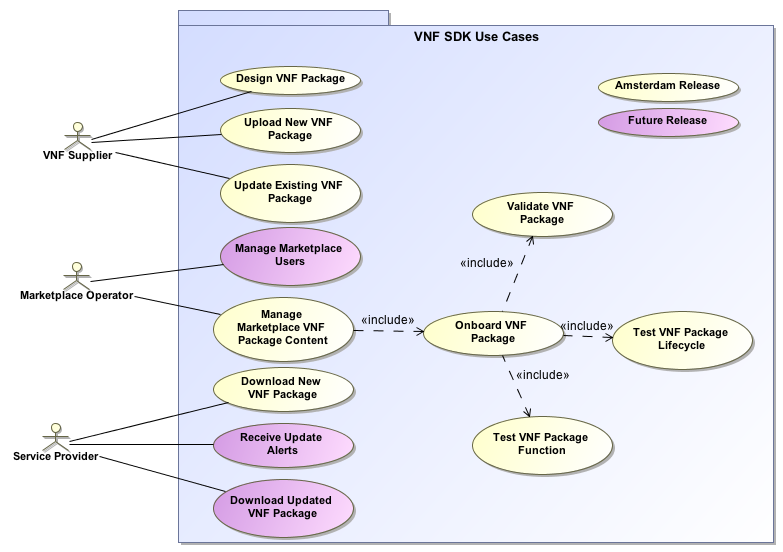...
Use cases define how different users interact with a system under design. Each use case represents an action that may be performed by a user (defined in UML as an Actor with a user persona).
modeling a 5G Service:
Use Case Functional Definitions
Use Case Title | Title of the Use Case5G Service Modeling and Creation | |
Actors (and System Components) | The list of Actors and System Components that participate in the Use Case | |
Description | Short overview of the Use Case | |
Points of Contact | Authors and maintainers of the Use Case. Use Case Lead, Key Use Case members and code contributors. | |
Preconditions | A list of conditions that are assumed to be true before the Use Case is invoked Includes description of Information Consumed | |
Triggers / Begins when | Describes the trigger for beginning the Use Case | |
Steps / Flows (success) | Describes the sequence of steps and interactions that occur during the Use Case (may include: description, data exchanges, functionality, state changes) Interaction diagrams may be included or referenced | |
Post-conditions | The expected results of the execution of the Use Case Includes description of Information Produced | |
Alternate / Exception Paths | Description of any exceptions or special process that could occur during Use Case | |
Related Use Cases | List of the Use Cases referenced by this Use Case | |
Assumptions | Describes any assumptions that are made for this use case | |
Tools / References / Artifacts | ) | ONAP, gNB. |
Description | This use case will lay the groundwork to introduce and open the discussion with the modeling sub-committee for the platform information modeling work to allow ONAP to integrate with a real "live" 5G DU Base station (PNF) The RAN (wireless) 5G base station network resource model is driven by the 3GPP standard: TS28.540 and TS28.541, the 5G NRM. This standard is used by all 5G vendors for their PNFs (DUs) which serves as a starting point to think about modeling work as it is common to all vendors. ONAP will not necessarily need to know or work with all of the ~300 parameters described in the standard, but rather should introduce a common "core" model into the ONAP platform release information model, so that other future use cases and applications can introduce model information in an orderly fashion. In R7, the OOF/SON/PCI and End-to-End Network Slicing use cases will leverage the work to introduce this common "core" model. Note that, these use cases ARE domain specific, to network wireless / radio access networks. So some thought should be given as to how to introduce domain-specific modeling into ONAP such that it can still serve many other domains with full functionality given to each of those domains. | |
Points of Contact | ||
Preconditions | N/A - this use case is modeling work only | |
Triggers / Begins when | N/A - this use case is modeling work only | |
Steps / Flows (success) | N/A - this use case is modeling work only | |
Post-conditions | N/A - this use case is modeling work only | |
Alternate / Exception Paths | N/A - this use case is modeling work only | |
Related Use Cases | End-to-End Network Slicing Use Case: E2E Network Slicing Use Case in R7 Guilin OOF/SON/PCI Use Case: | |
Assumptions | N/A - this use case is modeling work only | |
Tools / References / Artifacts | N/A - this use case is modeling work only |
SUPPORTING DOCUMENTS
| Document | File | ||||||
|---|---|---|---|---|---|---|---|
| Arch Presentation |
| ||||||
TESTING
Current Status
Testing Blockers
- High visibility bugs
- Other issues for testing that should be seen at a summary level
- Where possible, always include JIRA links
...



